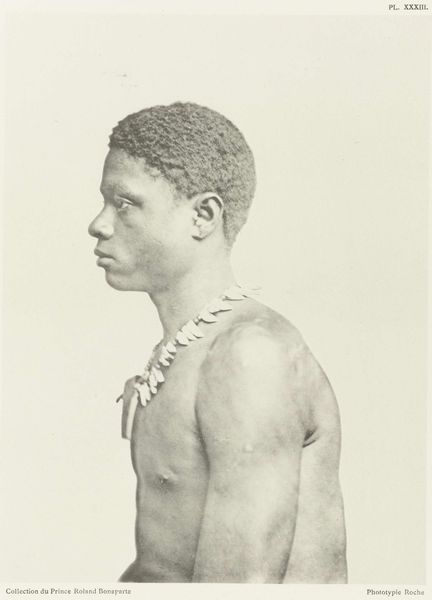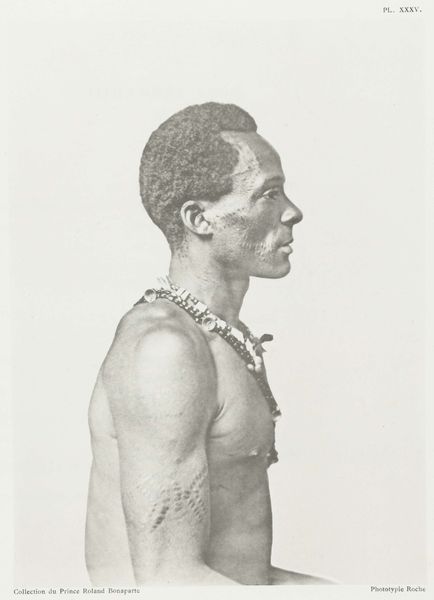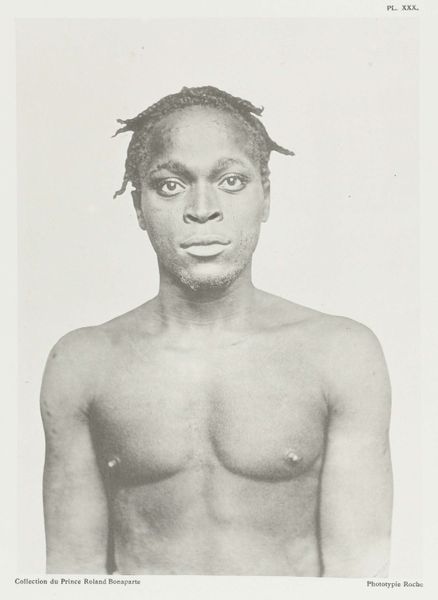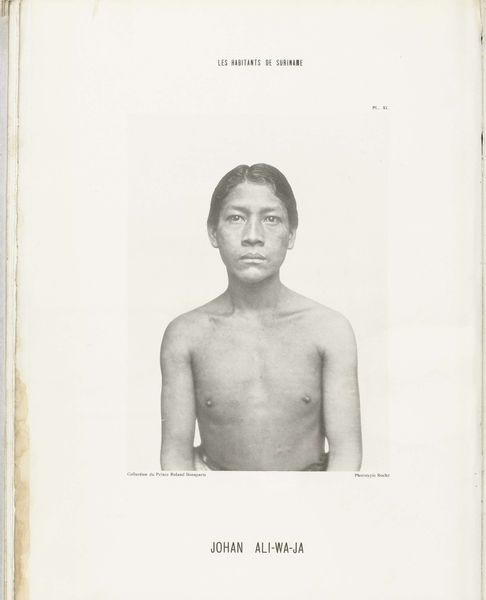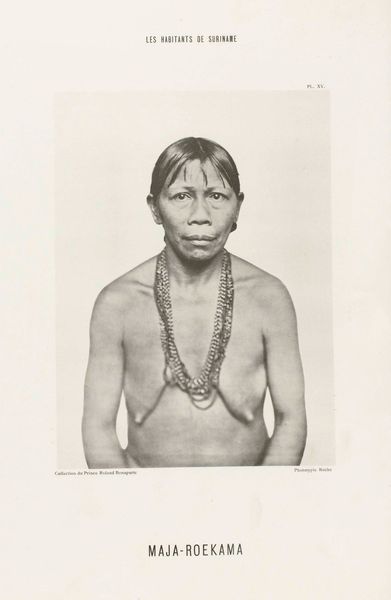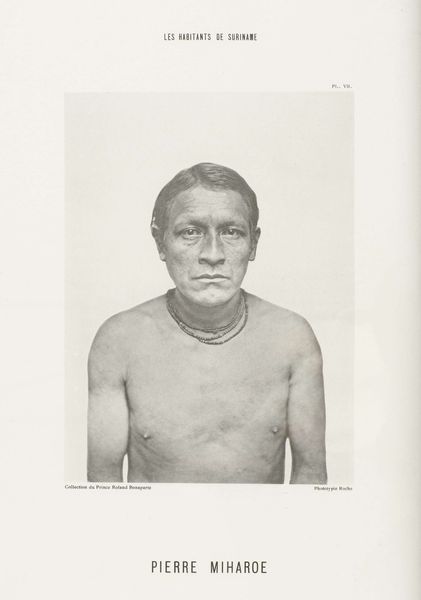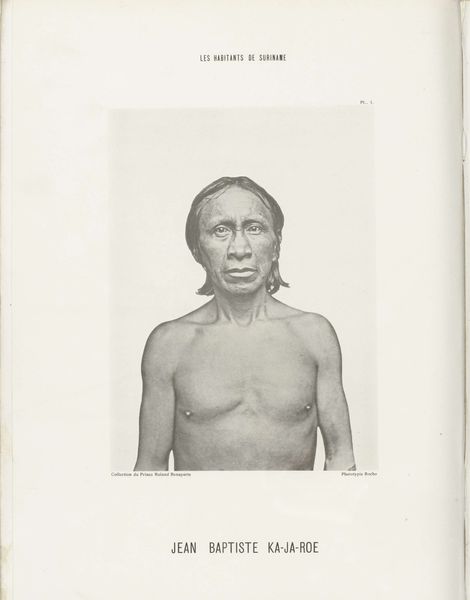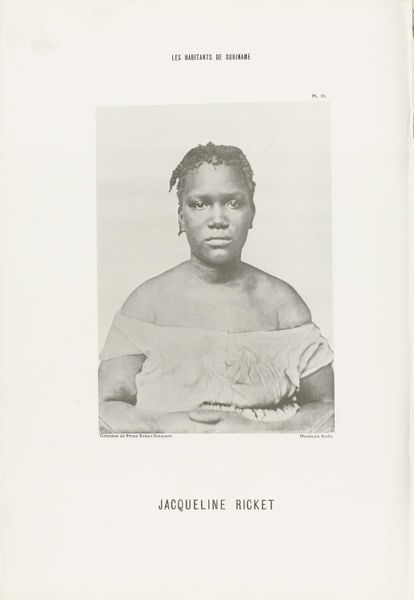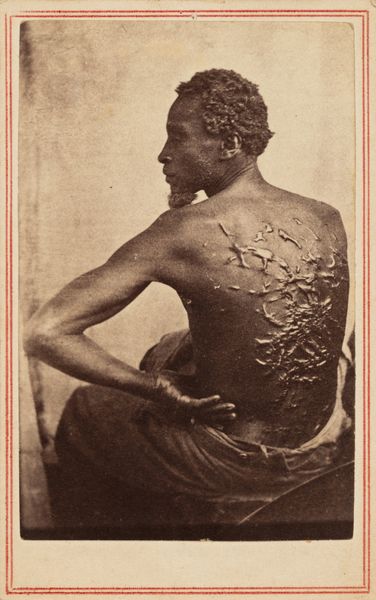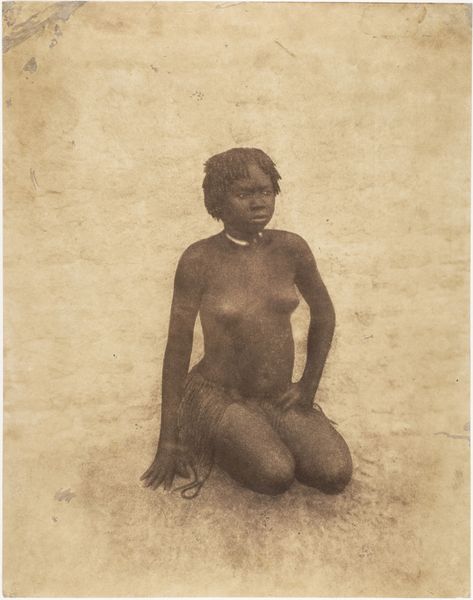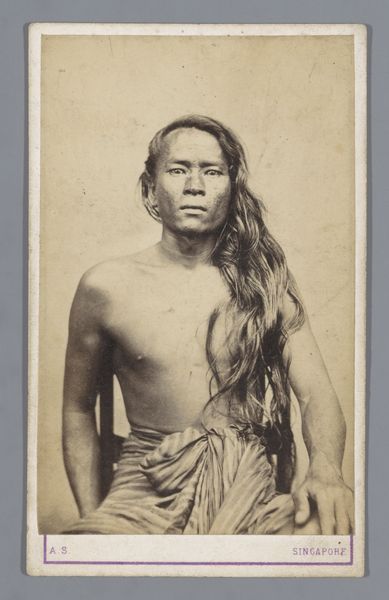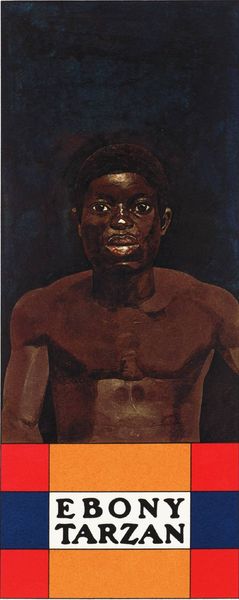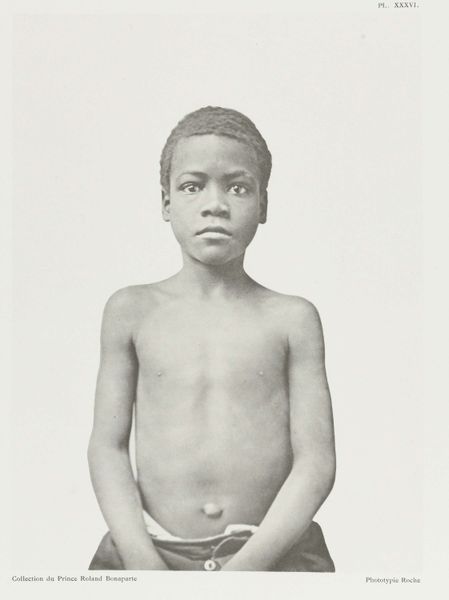
photography, albumen-print
#
portrait
#
african-art
#
figuration
#
photography
#
albumen-print
Dimensions: height 233 mm, width 175 mm
Copyright: Rijks Museum: Open Domain
Curator: Welcome. Here we have Friedrich Carel Hisgen's "Portret van Kwamina A-Pé-Sé," created between 1883 and 1884. It’s an albumen print photograph that's now held in the Rijksmuseum. Editor: The starkness hits you immediately. It’s such a direct gaze, almost confrontational. There is something deeply sad or unsettling about it too, despite the formality. Curator: Indeed. Understanding the social context is crucial here. These photographic portraits were often produced within colonial frameworks. Kwamina A-Pé-Sé’s image here circulates within the problematic genre of ethnographic documentation, categorized now as African Art. Editor: And we should consider the material conditions. An albumen print involves coating paper with egg whites, then exposing it to light through a negative. It’s a very labor-intensive, crafted process meant for reproducing images en masse. Was the subject made aware of this process? Did they receive agency over its manufacture, given that his image would be copied and seen by so many people? Curator: Precisely. The act of photographic representation during that period cannot be divorced from the politics of colonialism. It highlights the power imbalances inherent in image production and distribution. Even the neck piece made of teeth or bones, seemingly innocuous, may symbolize social hierarchy or ritual significance within his own community, made exotic or even dangerous. Editor: Yes, the image's circulation, originally a way to control and objectify the other, turns around and confronts us now with the uncomfortable questions of empire and its continued influence on institutions like the Rijksmuseum itself. Curator: It makes you wonder what Kwamina A-Pé-Sé's own perspective was. Was this documentation presented to him, or even explained in his language? Photography aimed at scientific truth could perpetuate societal prejudice. Editor: Looking at the print, you notice how finely the details of the jewelry, the hair and the light that caresses the chest have been rendered. These albumen prints are, undeniably, technically refined artifacts; yet, to what ends does such material mastery and care serve if it reinforces cultural and racial hierarchies? Curator: Precisely. And that tension – the artistic labor versus the historical baggage – that’s what makes viewing this object so complex and vital today. Editor: I leave with more questions than answers, troubled by the ways in which images can both reveal and obscure. Curator: An important takeaway as we consider the stories art can, and perhaps also cannot, tell us.
Comments
No comments
Be the first to comment and join the conversation on the ultimate creative platform.

